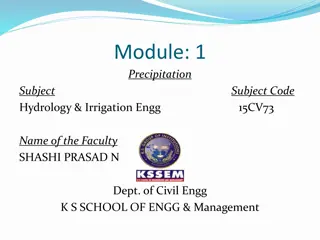
Types of Splints and Their Uses
Learn about the various types of splints such as rigid, soft, and traction splints, their differences from casts, uses for injuries like broken bones and strains, and the importance of proper immobilization for healing.
Download Presentation

Please find below an Image/Link to download the presentation.
The content on the website is provided AS IS for your information and personal use only. It may not be sold, licensed, or shared on other websites without obtaining consent from the author. If you encounter any issues during the download, it is possible that the publisher has removed the file from their server.
You are allowed to download the files provided on this website for personal or commercial use, subject to the condition that they are used lawfully. All files are the property of their respective owners.
The content on the website is provided AS IS for your information and personal use only. It may not be sold, licensed, or shared on other websites without obtaining consent from the author.
E N D
Presentation Transcript
StudyMafia.Org Types Of Splint Submitted To: Submitted By: Studymafia.org Studymafia.org
Content Introduction What's the Difference Between a Splint and a Cast? What Are Splints Used For? Types of Splints Rigid Splints Soft Splints Traction Splints
Introduction A splint is a supportive device that protects a broken bone or injury. A splint keeps the injured part of your body still to help with pain and promote healing. Some splints are flexible and some are rigid. The type of splint you need will depend on the type of injury you have and the part of your body that is injured.
What's the Difference Between a Splint and a Cast? Casts and splints are both orthopedic devices that support and protect injured ligaments, bones, tendons, and other tissues. They are both hard wraps. If you have a broken bone, a splint or cast may be used to help keep the broken ends of your bone together to help it heal. Casts are custom-made to fit your arm or leg. They are made of plaster or fiberglass and must be removed in your doctor's office. A cast wraps completely around your injury. Casts are not adjustable and may have to be replaced if they get loose because the swelling goes down. Casts provide more support than a splint.
Splints are also called half-casts. They don't provide as much support as a cast. The hard part of a splint doesn't wrap all the way around your injury. It's held in place with an elastic bandage or other material. A splint may be applied first if you have a lot of swelling. Splints can be custom-made or ready-made.
What Are Splints Used For? Splints are used to treat different types of injuries. Sometimes a splint is used before a cast, and sometimes a splint is used alone. Injuries that are treated with splints include: Broken bones Sprains Carpal tunnel syndrome Dislocated bones Strains Tendon ruptures
Types of Splints Rigid Splints Soft Splints Traction Splints
Rigid Splints This type of splint can be made from many different materials and includes all cardboard, hard plastic, metal, or wooden types of splints. The type of splint that is made rigid by evacuating air from a moldable splint (vacuum splint) is also classified as a rigid splint. Rigid splints should be padded well and should always extend one joint above and below the fracture.
Soft Splints This type of splint includes air splints, pillows, and sling and swathe-type splints. Air splints are good for fractures of the lower arm and lower leg. Air splints have the advantage of compression, which helps to slow bleeding, but they have the disadvantage of increasing pressure as the temperature rises or the altitude increases. They should not be put on angulated fractures since they will automatically apply straightening pressure.
Other major disadvantages of air splints include the fact that the extremity pulses cannot be monitored while the splint is in place, and the splints also often stick to the skin and are painful to remove. Pillows make good splints for injuries to the ankle or foot. They are also helpful, along with a sling and a swathe, to stabilize a dislocated shoulder.
Slings and swathes are excellent for injuries to the clavicle, shoulder, upper arm, elbow, and sometimes the forearm. They utilize the chest wall as a solid foundation and splint the arm against the chest wall. Some shoulder injuries cannot be brought close to the chest wall without significant force being applied. In these instances, pillows are used to bridge the gap between the chest wall and the upper arm.
Traction Splints This device is designed for fractures of the femur. It holds the fracture immobile by the application of a steady pull on the ankle while applying counter traction to the ischium and the groin. This steady traction overcomes the tendency of the very strong thigh muscles to spasm. There are many designs and types of splints available to apply traction to the lower extremity, but each must be carefully padded and applied with care to prevent excessive pressure on the soft tissues around thee pelvis.
References Google.com Wikipedia.org Studymafia.org Slidespanda.com
Thanks To StudyMafia.org






















